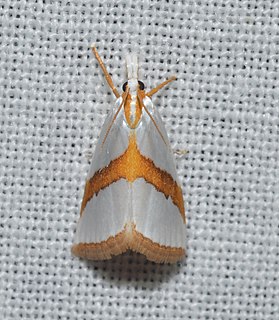
The Noctuidae, commonly known as owlet moths, cutworms or armyworms, are the most controversial family in the superfamily Noctuoidea because many of the clades are constantly changing, along with the other families of the Noctuoidea. It was considered the largest family in Lepidoptera for a long time, but after regrouping Lymantriinae, Catocalinae and Calpinae within the family Erebidae, the latter holds this title now. Currently, Noctuidae is the second largest family in Noctuoidea, with about 1,089 genera and 11,772 species. However, this classification is still contingent, as more changes continue to appear between Noctuidae and Erebidae.

Forbes is an American business magazine owned by Integrated Whale Media Investments and the Forbes family. Published eight times a year, it features articles on finance, industry, investing, and marketing topics. Forbes also reports on related subjects such as technology, communications, science, politics, and law. Its headquarters is located in Jersey City, New Jersey. Competitors in the national business magazine category include Fortune and Bloomberg Businessweek. Forbes has an international edition in Asia as well as editions produced under license in 27 countries and regions worldwide.

Psychodidae, called drain flies, sink flies, filter flies, sewer flies, or sewer gnats, is a family of true flies. Some genera have short, hairy bodies and wings giving them a "furry" moth-like appearance, hence one of their common names, moth flies. Members of the sub-family Phlebotominae which are hematophagous may be called sand flies in some countries, although this term is also used for other unrelated flies.

Aristotelia is a genus of moths in the family Gelechiidae. Well-known species are food plant specialists, and diverse hosts are used – Salicaceae, Solanaceae, Rosaceae, Fagaceae, Fabaceae, Asteraceae.

Idia is a genus of litter moths of the family Erebidae first described by Jacob Hübner in 1813.
Loxocrambus is a genus of moths of the family Crambidae.

Macrochilo louisiana, the Louisiana macrochilo or Louisiana snout-moth, is a litter moth of the family Erebidae. The species was first described by William Trowbridge Merrifield Forbes in 1922. It is found in North America from Quebec and Maine to Florida, west to Texas, north to Alberta.

The World's Billionaires is an annual ranking by documented net worth of the wealthiest billionaires in the world, compiled and published in March annually by the American business magazine Forbes. The list was first published in March 1987. The total net worth of each individual on the list is estimated and is cited in United States dollars, based on their documented assets and accounting for debt and other factors. Royalty and dictators whose wealth comes from their positions are excluded from these lists. This ranking is an index of the wealthiest documented individuals, excluding any ranking of those with wealth that is not able to be completely ascertained.

Glaphyriinae is a subfamily of the lepidopteran family Crambidae. It was described by William Trowbridge Merrifield Forbes in 1923. The subfamily currently comprises 509 species in 75 genera.
Oxyelophila callista is a moth in the family Crambidae. It was described by William Trowbridge Merrifield Forbes in 1922. It is found in North America, where it has been recorded from Texas.

Vaxi critica, the straight-lined vaxi or straight-lined argyria moth, is a moth in the family Crambidae. It was described by William Trowbridge Merrifield Forbes in 1920. It is found in North America, where it has been recorded from Maine and Ontario, south to Florida and west to Illinois. The habitat consists of fields and meadows.
Loxocrambus awemensis is a moth in the family Crambidae. It was described by James Halliday McDunnough in 1929. It is found in North America, where it has been recorded from Manitoba, Alberta, Michigan and Ontario. The habitat consists of sand dunes.
Loxocrambus canellus is a moth in the family Crambidae. It was described by William Trowbridge Merrifield Forbes in 1920. It is found in North America, where it has been recorded from Florida, Mississippi and Texas.
Loxocrambus coloradellus is a moth in the family Crambidae. It was described by Charles H. Fernald in 1893. It is found in North America, where it has been recorded from California and Colorado.
Loxocrambus hospition is a moth in the family Crambidae. It was described by Stanisław Błeszyński in 1963. It is found in North America, where it has been recorded from western Texas, through New Mexico to southern Arizona.

Microcrambus biguttellus, the gold-stripe grass-veneer, is a moth in the family Crambidae. It was described by William Trowbridge Merrifield Forbes in 1920. It is found in North America, where it has been recorded from Alabama, Florida, Georgia, Illinois, Indiana, Kentucky, Maine, Manitoba, Maryland, Massachusetts, Michigan, Minnesota, Mississippi, New Brunswick, New Jersey, New York, North Carolina, Nova Scotia, Ohio, Oklahoma, Ontario, Quebec, South Carolina, Tennessee, Texas, West Virginia and Wisconsin. It has also been recorded from Cuba and Puerto Rico.
Microcrambus minor is a moth in the family Crambidae. It was described by William Trowbridge Merrifield Forbes in 1920. It is found in North America, where it has been recorded from Alabama, Florida, Illinois, Indiana, Manitoba, Maryland, Massachusetts, Minnesota, Mississippi, New Hampshire, New York, North Carolina, Ohio, Oklahoma, Ontario, Pennsylvania, Quebec, South Carolina, Tennessee, West Virginia, Virginia, and Wisconsin.
Noctuini is a tribe of owlet moths in the family Noctuidae. There are at least 520 described species in Noctuini.









